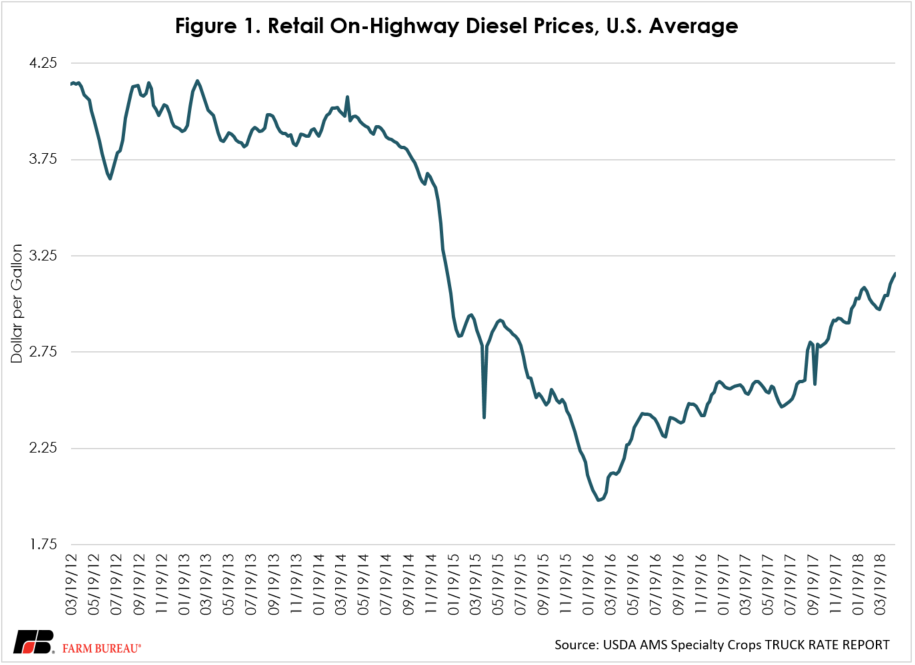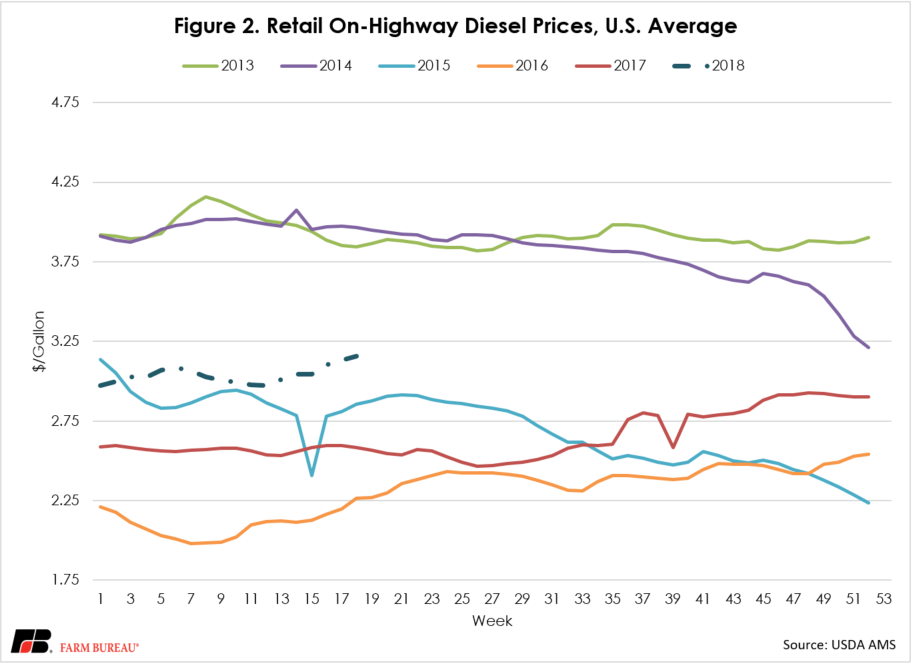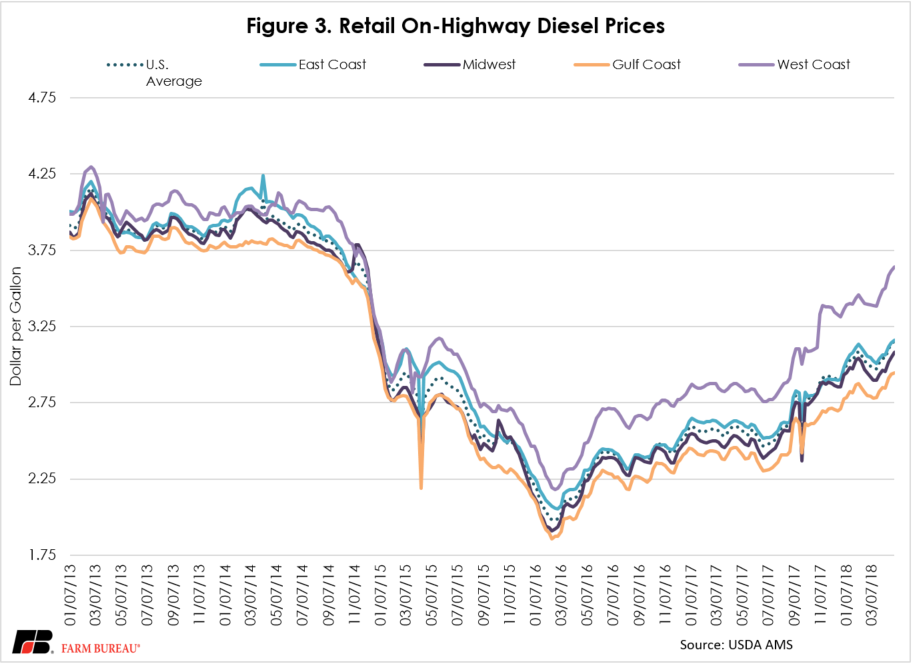Diesel Fuel Rates Near Late 2014 Levels

photo credit: Getty
Veronica Nigh
Former AFBF Senior Economist
With the vast majority of fresh fruits and vegetables grown in the United States moving to their final destination by truck, on-highway diesel fuel prices play a significant role in setting the rates specialty crop growers must pay to get their product to market. For individual growers the impact of rising fuel prices depends on distance, perishability of their crop and method of transportation. But as USDA’s Economic Research Service summarized in a 2013 report, “Overall, as fuel prices rise, so do wholesale produce prices and the margins between farm and wholesale prices.” For this reason, the steady upward trend in on-highway diesel fuel rates since early 2016 has growers starting to wonder when they’ll get some relief.
For farmers and ranchers who rely heavily on truck transportation, the last five years have been anything but steady. In that time, we’ve witnessed three distinct periods. During the first period, on-highway diesel prices typically exceeded $3.75 per gallon, and averaged nearly $4 per gallon. However, once diesel prices broke the $3.75 per gallon barrier in September 2014, rates fell steadily and significantly. Diesel prices hit a five-year low on Feb. 15, 2016, at $1.980 per gallon. Since that low point, diesel prices have steadily risen. USDA’s Agricultural Marketing Service’s weekly Specialty Crops Truck Rate Report, released on May 2, 2018, reports a U.S. average price of $3.157 – a level last seen in January 2015. The diesel price roller coaster is depicted in Figure 1.

While rates have yet to reach the fevered level of 2013/2014, the steady climb has growers concerned that prices may be headed in that direction. In Figure 2 we see that since mid-January, on-highway diesel prices have exceeded the price paid during the same month in all of the last three years. In recent weeks the increase over year-ago prices has been even more dramatic. The U.S. average on-highway diesel price was more than 22 percent higher at the end of April 2018 than the end of April 2017.

Not unexpectedly, the U.S. average masks pretty significant differences that exist between regions. Since the beginning of 2018, East Coast prices have averaged 3 cents per gallon higher than the national average, while Midwest prices have averaged 6 cents per gallon lower. Prices have averaged 20 cents per gallon lower than the national average in the Gulf Coast region. At the same time, West Coast prices have averaged a whopping 40 cents per gallon higher. While we see in Figure 3 that these levels generally track with the recent five-year history, the spread between the West Coast and the rest of the country began to be more pronounced during the summer of 2016 and hasn’t narrowed much since then.

